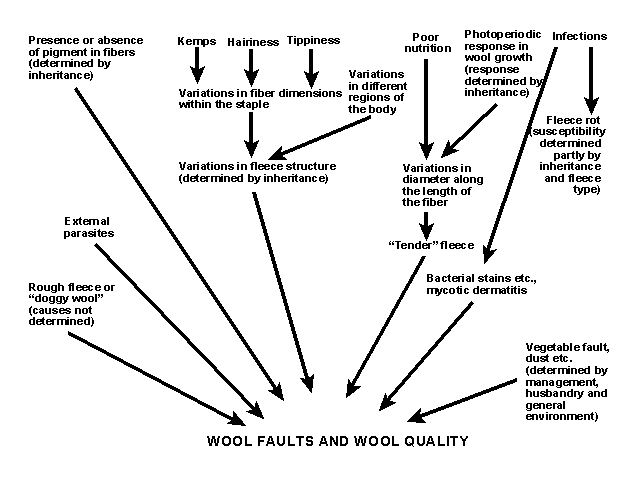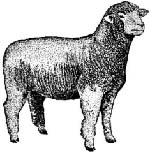

Introduction:
The name "marginal" implies wool of questionable quality for restricted utilization or processing. In any sector of the United States wool industry, marginal wools are usually present and must be dealt with in the market. These wools are discounted heavily in the raw wool market. These are wools that could have one or more of the following faults or problems:Generally, these marginal wools have limited use outside of the normal processes. In recent years, some research and development has been undertaken to investigate possible market uses for so called marginal wools.
The Following Factors Determine the Value of Wool:
:Purity:
Uniformity:
Soundness or Strength:
Wool Faults:
Wool faults are defects that lower the value for manufacturing purposes; they can be grouped roughly into four types:
Inherited or Environmental Factors That Affect Wool Quality:

|
|
|